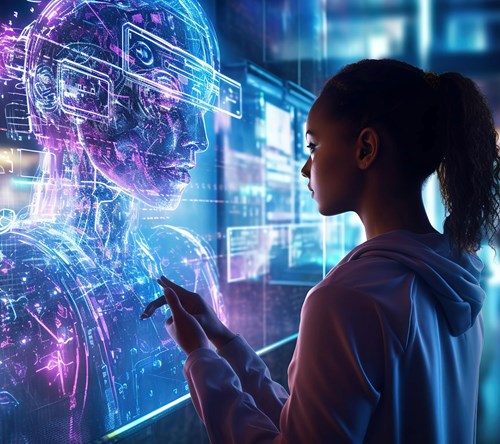Customer Experience Trends 2023: Immersive Technologies and Gamification
Just past a few years full of change and uncertainty, in 2023, businesses are facing the challenge of decoding the art of forging lasting connections with their audience and sustaining steady business outcomes even during economic downturns. As the customer experience (CX) industry continues to witness significant transformation, advancing technology and evolving customer expectations are coming into play to devise extraordinary solutions.
The digital customer experience trends stood the test of an uncertain time when the entire world, businesses across industries, and (by extension) contact centers were hit by the pandemic. Every customer-facing business was realizing the importance of customer experience like never before. Meanwhile, top brands were delivering continued excellence through disruptive CX solutions centered around one thing: people!
Today, while personalization is not new practice, the sheer scale of data and advanced analytics available to marketeers is allowing them to create offerings that are unique to their customers’ taste. Also, more customers are learning to interact with chatbots and virtual assistants for 24/7 support with quicker and better-customized solutions, without the need for human intervention. However, in this article, we have tried to bring out the top two emerging customer experience trends 2023 will be wrapped around:
Immersive Experiences and the Metaverse
Immersive technologies like virtual reality (VR) and augmented reality (AR) have already made waves in the gaming and entertainment industries. In 2023, businesses are rapidly adopting these technologies to create more engaging and interactive customer experiences. Widening the horizons of the omnichannel CX solutions to even more immersive and connected customer touchpoints, brands are learning to blend these technologies with the traditional engagement channels and create richer, more wholesome CX.
Similar to the CX revolutions brought about by e-commerce in the 1990s and social commerce in the early 2000s, ‘phygital’ experiences or metaverse platforms are providing businesses a means to increase engagement and create more memorable interactions with their consumers. One could only begin to imagine the extensive range of use cases that the power of immersive technologies brings to the table and where metaverse is headed in the years to come.
For instance, the immediate effects of these digital customer experience trends will be seen across virtual shopping experiences wherein, a customer can interact with products from anywhere, anytime – be it picking your favorite jacket after trying it on your AI avatar or choosing the right piece of furniture that matches your living room curtains after visualizing how the various options pan out inside the digital representation of your home!
Parallelly, CX with services will be transformed in a way that was never before possible. For example, a travel agency could use VR to give customers a virtual preview of a destination before booking a trip; a customer service executive could help you fix a washing machine issue by identifying the fault using AR. Not just businesses, but consumers are becoming increasingly aware of these new-age possibilities too. As many as 64% people have shown excitement over immersive shopping experiences, according to a McKinsey report.
Gamification
Gamification is another of the two strongest customer experience trends 2023 will witness gaining momentum. While the history of gaming goes back in time to probably as old as the first human civilizations, its contribution to the gamer experience has evolved manifold beyond the mere objective of entertainment. It has been substantially validated to improve players’ cognitive skills and even enhance their emotional wellbeing, as observed worldwide during the pandemic.
Gamification involves using game-like elements, such as points, badges, and leaderboards, to motivate and engage customers. It has already been successfully used in a variety of industries, including fitness (e.g., fitness bands & apps) and education (e.g., e-learning apps). In the CX industry, gamification can be used to encourage customers to engage with a brand in a more meaningful way – a win-win for both consumers and the business, such as gamified loyalty programs, and gamified market research.
Many businesses have already ‘quizified’ their voice of consumer (VOC) surveys to better understand their customers' behavior and preferences. Several more are starting to extend this and turn the customer’s product exploration journey into an interactive experience, offering more personalized recommendations and tailored promotions and pricing plans, while also making the dreary ‘product search’ feature more convenient and enjoyable for them.
Additionally, gamification can also be a great tool to train employees allowing them to gain practical experience in a simulated environment. This concept inspires the ‘TP Gaming Arena’, Teleperformance’s proprietary gamified learning environments implemented across geographies (soon to make debut in India). A gamification strategy for upskilling not only ensures happy employees by enhancing their learning experience but also leads to happier customers by improving the quality of every interaction!



